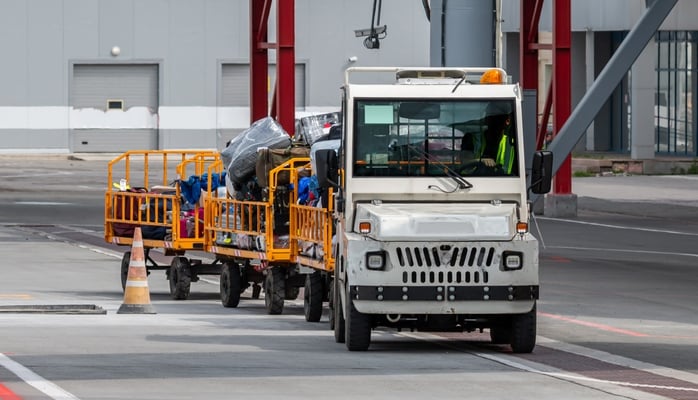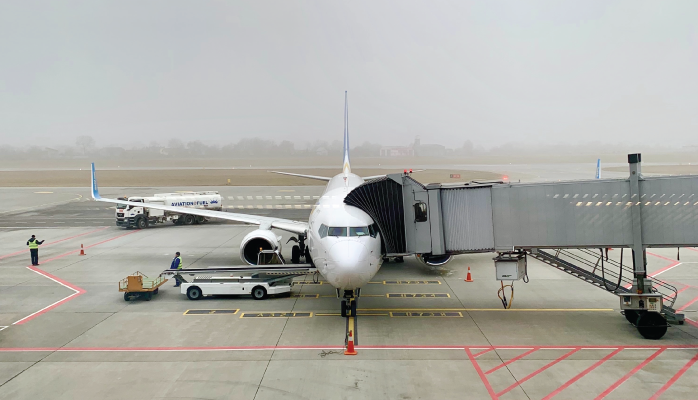Why Definitions of Hazard and Risk Matter

One of the most ubiquitous problems in aviation risk management is the misuse of commonly used words, in particular “hazard” and “risk.” Often, these two items are either:
- Used interchangeably; or
- Used much too broadly.
Accuracy is extremely important, as much of the bureaucracy in an aviation safety management system (SMS) builds upon basic definitions of safety elements. Misunderstanding or assuming incorrect definitions can compromise how safety is accounted for and documented in the aviation SMS.
Related Aviation Hazard and Risk Articles
- The Difference Between Hazard and Risk
- How to Identify Hazards and Assess Risks in Aviation SMS - With Free Resources
- What Is Difference Between Hazard and Risk in Aviation SMS
Education Required to Reduce Hazard and Risk Confusion
Inaccurately labeling hazards and risks becomes problematic when safety managers create reports to be reviewed by senior management and regulatory authorities. We can easily imagine how foolish a safety manager will look when making this common mistake. Professional credibility and expert power are difficult to reclaim once lost. The purpose of this article is to educate and hopefully improve your risk management capabilities.
Having an accurate and correct understanding of hazard and risk becomes increasingly important as aviation SMS implementations around the globe build complex data management systems around these concepts. And make no mistake:
- Hazard and risk are concepts that we can identify in actual operational environments.
The implication here is that with incorrect conceptual understanding, incorrect real-world identification is bound to follow.
Definition of a Hazard in Aviation Safety

A hazard is a concept that identifies:
- A condition, such as an object, situation, circumstance, etc.;
- A primary contributing factor to safety mishap; and
- An identifiable state of being that poses a threat to operational safety.
For example, the Federal Aviation Administration (FAA) defines a hazard as, “A condition that could foreseeably cause or contribute to an aircraft accident…” (14 CFR § 5.5). These definitions and descriptions also tell us what a hazard is NOT:
- Damages;
- Safety mishap;
- People; nor
- Benign objects.
For example, a “building” is not a hazard because it poses no inherent operational threat (i.e., state of being). However, an “unlit building” or “tall building” may very well be a hazard because a building in such a state could pose a threat that leads to an accident.
Such distinctions are extremely important in getting the definition of hazard correct. When in doubt:
- Be specific; and
- Ensure that you identified hazard describes (with an adjective) a state of being that could be threatening (tall, dark, severe, complex, inadequate, damaged, etc.).
Related Aviation Hazard and Risk Articles
- Difference Between Hazards, Risks & Control Measures in Aviation SMS
- Difference Between Hazard Risk Assessment and Hazard Risk Analysis
- Life Cycle of Hazard and Risk Occurrence in Aviation SMS
What Hazards Look Like in Operational Environment
What people forget is that, as said, hazard definitions are a conceptual tool we use to identify a particular state of being in the operational environment. Let’s repeat: hazard definition is a tool! Like any tool, you should understand exactly what you are working with.
What countless safety managers fail to realize is that hazards are dynamic, not static. What does this mean?
- A hazardous state of being requires many moving parts that, when combined, produce threat;
- The events that proceed from a hazard do not “lead to mishaps” but “CAN lead to mishaps depending on the responses of the moving parts; and
- The particular circumstances that produce a particular hazard will change over time as the operational environment changes (i.e., policy, technology, etc.).
The overall sense of dynamic that you need to understand is that the production of a hazard and every second that follows can be influenced for better or worse.
Breaking Down Definition of Risk (Two Types)

The concept of “Risk” is where things get confusing, as there are two definitions for risk depending on the context:
- In general (i.e., “the risk of…”): The composite of predicted severity and likelihood of the potential effect of a hazard (14 CFR § 5.5); and
- Specific risk (i.e., “a risk”): a safety mishap, accident, incident, damage, etc.
The key marker of a specific risk is damages. You can separate these damages from “consequences,” whereby damages are what happens and the consequences are the further ramifications of the damages.
Risk (in general) is generally documented with a risk matrix. Predicting risk involves:
- The severity of most likely outcome – i.e., severity of most likely specific risk; and
- The likelihood of the most likely outcome occurring – i.e., chances of the most likely specific risk occurring.
Of course, there are many intermediary factors between a hazardous state and risk occurrence. These intermediary factors will greatly affect whether or not the risk occurs.
Related Aviation Risk Matrix Articles
- What Is a Risk Matrix and Risk Assessment in Aviation SMS
- How to Define Severity and Likelihood Criteria on Your Risk Matrix
- How to Define Your Risk Matrix in Aviation SMS
Connection Between Hazard and Risk
Now that we have established definitions and the context for hazard and risk, it’s important to understand that, despite oversight agency guidance that indicates it, hazards do not result in risk occurrence automatically.
Many other contributing factors bridge the gap between hazards and risk occurrence, such as:
- Presence of risk controls;
- Adequacy of existing risk controls;
- Human awareness;
- Human responsiveness;
- Other Human Factors;
- Environmental factors that are beyond the control of the SMS implementation (i.e, weather); and
- Behavior of third parties.
Hazards can result in risk occurrence fairly quickly or take a long time to develop, depending on the above bullet points. Aviation SMS implementations should focus adequate energy and time on addressing the above points.
Aviation SMS Designed to Manage Hazards and Associated Risk
A hazard will have a very hard time resulting in risk occurrence given:
- Adequate risk controls;
- Well-trained personnel;
- Strong aviation safety culture for identifying hazards and reacting to exposure; and
- Some luck.
Let’s not forget that there is an element of luck in risk avoidance. That being said, SMS implementations that prepare employees and the operational environment should be able to avoid many risk-occurrences.
Hazards and risks are central themes in aviation SMS. Without hazards and risks, there would be no need for aviation SMS implementations. Due to the lack of standards for identifying and managing hazards across the world, ICAO deemed it necessary for the implementation of formal aviation SMS. Aviation SMS was designed to manage diverse types of operations in the risky environment in which aviation service providers function.
See this free resource below to test your or your employee's knowledge about hazards, risks, and risk controls.
Last updated in November 2025.








